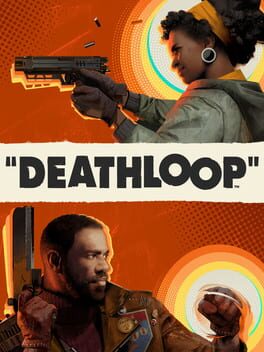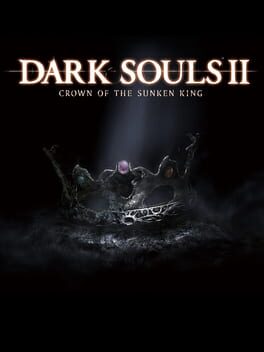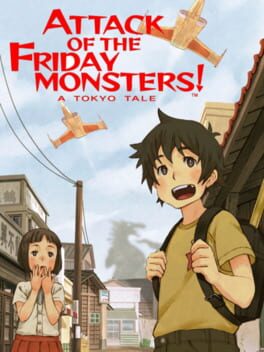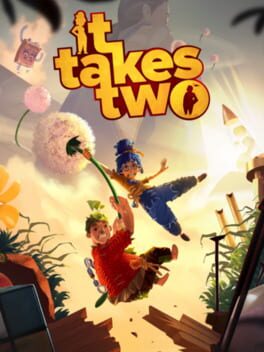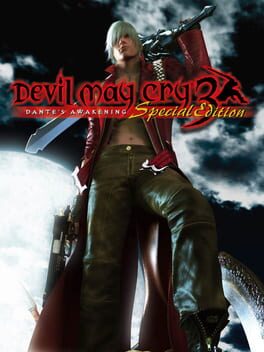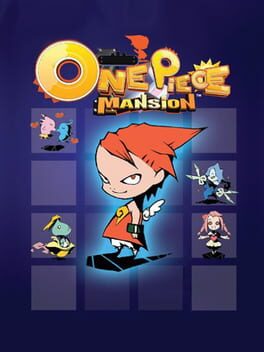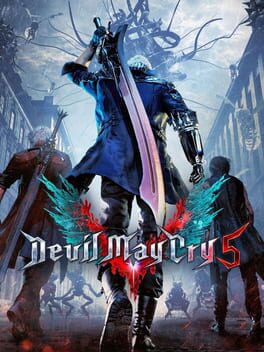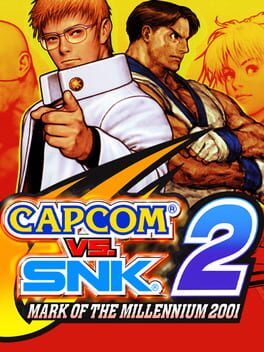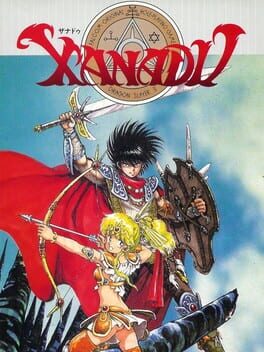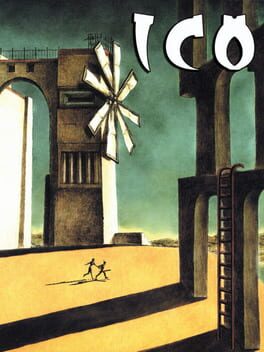Solrack
17 reviews liked by Solrack
Deathloop
2021
Let’s make a time loop game. First, we need to establish a mystery, something that’ll really play into the strength of the format, with something new to discover each loop. Since we at Arkane have mastered the magical assassin concept, we’ll blend the ideas, and have players discover how to assassinate a list of targets across a repeating day.
But how do we prevent players from just lucking into a solution, going to the right places and beating the game in two hours? Dishonored was already criticized for being short, and if even 1% of players beat the game in one run, we’ll never hear the end of it. So, we’ll have to force some repetition: necessary codes will be mutually-exclusive, so players will have to loop at least a few times before they’re able to unlock the ending. We’ll author a linear sequence of events that will guide the player and pace the experience.
What about players who don't like the repetition though? It won’t take long for people to get tired of repeatedly fetching their favorite weapons. To solve that, we could have players preserve their loadout between runs… but that would mean that we need to add a little more depth to it, so they don’t just gather everything once and stop caring. The weapons could have randomized bonuses like a looter-shooter, and collectible trinket buffs as well. Adding in character buffs and loot rarity would ensure that there’s always something new to find each run.
Of course, that will work well with the invasion-based multiplayer. Everyone will be fighting a unique opponent, which is great. We can also kill two birds with one stone by limiting the amount of powers players can equip at one time, further emphasizing unique approaches and making gunfights easy to follow. Speaking of limitations however, there will need to be some sacrifices in the realm of map design, since having a one-on-one fight across sprawling maps with load zones would be a nightmare, especially if hiding on rooftops and turning invisible is on the table. So, we won’t have events progress in real time, just in a single time-of-day per mission, because we won’t know how long those encounters may last. It also wouldn’t be good to lock weapons and buffs behind the multiplayer system, because that would let expert assassins steamroll new players. As a final failsafe, we’ll include an option to only play single player, in case it devolves into an invisible sniper camp fest.
Great. This design makes sense from front to back. We’ve walked through all the decisions and how they fit with all the others. We’ll have a time loop game where… players preserve everything from loop to loop, with no time pressure to navigate a linear sequence of events. We’ll prevent players from being bored with excessive repetition by… having them farm currency and random items. They’ll do that until they feel comfortable with tackling the big challenges and handling multiplayer invasions, because losing to an invader resets all the progress on your current loop. You’ll only ever do it when you’re not trying to focus on completing the story, since multiplayer has no benefits compared to isolating yourself in single player.
Hold on, how did this happen? We made decisions that made perfect sense; why is everything so wrong? Why do all our systems work against themselves? I guess it’s because we started with some good ideas, like the time loop assassin stuff and spy-versus-spy multiplayer invasions, but then immediately focused on how to sterilize those core concepts for people who aren’t interested. We made a time loop game and then removed all the time pressure! We took the magical powers and intricate maps we’re great at creating, and saddled them enough limitations to where they're worse than our old games! We made those sacrifices so the multiplayer would work, and then disincentivized engaging with it, killing the point and the playerbase in one shot! Next time we try this, we gotta keep it simple. Focus on what we think is cool and commit to it. Start from scratch. Ok.
Let’s make a time loop game.
But how do we prevent players from just lucking into a solution, going to the right places and beating the game in two hours? Dishonored was already criticized for being short, and if even 1% of players beat the game in one run, we’ll never hear the end of it. So, we’ll have to force some repetition: necessary codes will be mutually-exclusive, so players will have to loop at least a few times before they’re able to unlock the ending. We’ll author a linear sequence of events that will guide the player and pace the experience.
What about players who don't like the repetition though? It won’t take long for people to get tired of repeatedly fetching their favorite weapons. To solve that, we could have players preserve their loadout between runs… but that would mean that we need to add a little more depth to it, so they don’t just gather everything once and stop caring. The weapons could have randomized bonuses like a looter-shooter, and collectible trinket buffs as well. Adding in character buffs and loot rarity would ensure that there’s always something new to find each run.
Of course, that will work well with the invasion-based multiplayer. Everyone will be fighting a unique opponent, which is great. We can also kill two birds with one stone by limiting the amount of powers players can equip at one time, further emphasizing unique approaches and making gunfights easy to follow. Speaking of limitations however, there will need to be some sacrifices in the realm of map design, since having a one-on-one fight across sprawling maps with load zones would be a nightmare, especially if hiding on rooftops and turning invisible is on the table. So, we won’t have events progress in real time, just in a single time-of-day per mission, because we won’t know how long those encounters may last. It also wouldn’t be good to lock weapons and buffs behind the multiplayer system, because that would let expert assassins steamroll new players. As a final failsafe, we’ll include an option to only play single player, in case it devolves into an invisible sniper camp fest.
Great. This design makes sense from front to back. We’ve walked through all the decisions and how they fit with all the others. We’ll have a time loop game where… players preserve everything from loop to loop, with no time pressure to navigate a linear sequence of events. We’ll prevent players from being bored with excessive repetition by… having them farm currency and random items. They’ll do that until they feel comfortable with tackling the big challenges and handling multiplayer invasions, because losing to an invader resets all the progress on your current loop. You’ll only ever do it when you’re not trying to focus on completing the story, since multiplayer has no benefits compared to isolating yourself in single player.
Hold on, how did this happen? We made decisions that made perfect sense; why is everything so wrong? Why do all our systems work against themselves? I guess it’s because we started with some good ideas, like the time loop assassin stuff and spy-versus-spy multiplayer invasions, but then immediately focused on how to sterilize those core concepts for people who aren’t interested. We made a time loop game and then removed all the time pressure! We took the magical powers and intricate maps we’re great at creating, and saddled them enough limitations to where they're worse than our old games! We made those sacrifices so the multiplayer would work, and then disincentivized engaging with it, killing the point and the playerbase in one shot! Next time we try this, we gotta keep it simple. Focus on what we think is cool and commit to it. Start from scratch. Ok.
Let’s make a time loop game.
Las vagas similitudes de Dark Souls 2 con la saga King's Field solo sacan a relucir el deterioro en el diseño vertebral de estos juegos. Donde antes el protagonismo estaba en el lugar, ahora lo está en la acción. Donde antes se buscaba ponerte en los pies de un aventurero y actuar en primera persona, ahora se limitan a saturar el pasillo al siguiente atajo de enemigos en sus estudiadas posiciones. Poco queda de la espeleología de la saga prima, aunque se ven retazos. Se intuyen paralelismos en los golems del bosque renacidos en árboles o en la imagen de un rey Vendrick consumido en su soledad (en Dark Souls 3 habrían convertido este encuentro en una pelea multifásica). Existen ecos de cierta ciudad subterránea en esta aventura suplementaria, donde buscamos la corona de un rey olvidado en lo profundo de un templo custodiado por un dragón. Cuando pisamos una placa que activa una trampa o accionamos con una flecha un mecanismo que descubre un pasadizo secreto, nos viene el lejano recuerdo de cuando éramos arqueólogos y no guerreros.
The finish date is just for the sake of the record. This game is an infinite work of art. Arguably, one of the best M2 ShotTriggers release (with ESP Ra.De. , in my opinion). There was a time where Cave were gods. Now they mostly live of licensing stuff (unfortunately, some of them only in Japan, like every M2 gourmet port), but their legacy is immortal.
Night Slashers
1993
Stray
2022
Notes on Stray forcefully anti-intellectuals because it is necessary to think about video games outside the logic of video games or something like that
-I talk too much about spaces, their construction and exploration and I barely realize how important the height and size we use to move through it is, but I have always felt that small avatars are a little more interesting. Maybe because I'm 1.85, I have no idea.
-When Stray was released I saw a tweet that said something like "it's a game about being a cat but in BoTW you move more like a cat" or something like that. I found it a bit ridiculous because it seemed to disdain Stray's navigation based on pseudo-realistic logic, but in BoTW almost any surface is "sticky" and you can scale it like a lizard. That's not very catty bro
-The environments are excellent on their own, but they also seem to me to be an excellent architecture that reflects the dilemma of the automata.
There is a lot of beauty in walking around the district and just sitting next to any inhabitant, a robot, an npc, a mannequin. an inhabitant.
Why fool ourselves, if the game had been a cat Playground most of GamersTm would have been annoyed for not having objectives, "nothing to do".
goodoo.
-The complaint of many is that the game should have been a playground instead of a directed adventure with some freeform moments. I think so too, but against everything I believed, I ended up liking the direction, despite being quite conventional.
-Creating a fictional world through the aesthetic and cultural appropriation of countries with problematic political pasts (is there a country that does not have it?) can be problematic, but it is true that many countries have done it to a greater or lesser extent. It doesn't matter how; Turbo-capitalist revisions of Marie Antoinette of Austria, JRPGs with bucolic aesthetics or those martial arts movies where completely anachronistic techniques and movements are shown. Perhaps it would matter more WHO takes that culture to use it as background and decoration
-Alexis Ong's text isn't bad to be honest
-Sisi Jiang's text wouldn't be bad either. But back to the same.
It's not that I want to play the parry that we should be permissive with the romanticization (and appropriation) of a problematic aesthetic and culture for the sake of a freer and more experimental fiction... But if I'm doing it a little?? maybe?
Why complaining about the appropriation of pizza or the word (k)Otaku would be silly but doing it about Hong Kong architecture is smart?
-In the past, some Asian countries, by necessity or imposition, have also absorbed too much Western culture, now they appropriate it and, by necessity or because of the turbo-capitalism in which we live, they market their own culture.
I apologize if this may offend anyone but it is something that I see very real.
-I talk too much about spaces, their construction and exploration and I barely realize how important the height and size we use to move through it is, but I have always felt that small avatars are a little more interesting. Maybe because I'm 1.85, I have no idea.
-When Stray was released I saw a tweet that said something like "it's a game about being a cat but in BoTW you move more like a cat" or something like that. I found it a bit ridiculous because it seemed to disdain Stray's navigation based on pseudo-realistic logic, but in BoTW almost any surface is "sticky" and you can scale it like a lizard. That's not very catty bro
-The environments are excellent on their own, but they also seem to me to be an excellent architecture that reflects the dilemma of the automata.
There is a lot of beauty in walking around the district and just sitting next to any inhabitant, a robot, an npc, a mannequin. an inhabitant.
Why fool ourselves, if the game had been a cat Playground most of GamersTm would have been annoyed for not having objectives, "nothing to do".
goodoo.
-The complaint of many is that the game should have been a playground instead of a directed adventure with some freeform moments. I think so too, but against everything I believed, I ended up liking the direction, despite being quite conventional.
-Creating a fictional world through the aesthetic and cultural appropriation of countries with problematic political pasts (is there a country that does not have it?) can be problematic, but it is true that many countries have done it to a greater or lesser extent. It doesn't matter how; Turbo-capitalist revisions of Marie Antoinette of Austria, JRPGs with bucolic aesthetics or those martial arts movies where completely anachronistic techniques and movements are shown. Perhaps it would matter more WHO takes that culture to use it as background and decoration
-Alexis Ong's text isn't bad to be honest
-Sisi Jiang's text wouldn't be bad either. But back to the same.
It's not that I want to play the parry that we should be permissive with the romanticization (and appropriation) of a problematic aesthetic and culture for the sake of a freer and more experimental fiction... But if I'm doing it a little?? maybe?
Why complaining about the appropriation of pizza or the word (k)Otaku would be silly but doing it about Hong Kong architecture is smart?
-In the past, some Asian countries, by necessity or imposition, have also absorbed too much Western culture, now they appropriate it and, by necessity or because of the turbo-capitalism in which we live, they market their own culture.
I apologize if this may offend anyone but it is something that I see very real.
Elden Ring
2022
Y yo que pensaba que tras Dark Souls 3 las cosas sólo podían ir a mejor. La formula souls ya es un hecho, si es como empezó o como fue planeada es cosa del pasado, la gente con los años se armó una visión. Así como parece que en un punto todos nos creímos la mentira de que Doom es frenético, gore y badass, todos nos creímos que Dark Souls es morir, trollear, peleas 1 vs 1 contra jefes épicos de dos o tres fases.
Elden Ring sigue esa fantasía que se volvió realidad con Bloodborne. Por muy libre que te deje el mundo, y por tantas catacumbas o zonas enteras secretas que haya, el juego siempre tiene el mismo fin, jefe gigante, rodar, atacar. Cambia un poco el moveset, un par de delays aquí y allá, pero siempre lo mismo. Escenarios vacíos, amplios, sólo el jefe y vos (Hay alguna variación, un enemigo normal con más vida de lo normal o pelearle a dos jefes previos a la vez). Pero el combate no da para más, tras Sekiro esperaba como mínimo una aproximación más original, pero no nos engañemos, esto pide la gente.
Es entendible lo decepcionante que puede ser pelearle 5 veces al mismo jefe, al árbol ese con martillo o al flaco con una túnica de piel humana. Pero más nefasto es que te teletransporten a arenas aisladas del mapa para pelear con los jefes de verdad importantes. Lo de los jefes secundarios repetidos se podría decir que es una metáfora de lo que se convirtieron los combates, todos iguales. Lo de los principales no tiene perdón, son entidades aisladas de todo, viviendo en arenas gigantes esperando a que te teletransportes y los revientes a palos.
El juego se vendió como el "más accesible que nunca" "el juego para entrar en la saga", ahora se pueden invocar enemigos para que te ayuden, sortear zonas enteras con parkour o la clásica magia a distancia de siempre. Pero buena suerte contra este enemigo que se cura al atacarte.
Uso invocaciones entonces: se cura al atacarlas
Voy a distancia: hace gap closers y no te deja castear hechizos
Voy full tanque: se cura golpeando tu escudo también
solución? suena la campanita. Rodar y atacar.
Uno de los jefes finales es un hombre musculoso que te empieza a hacer movimientos de lucha libre mientras grita lo genial que es. ¿Por qué no puedo tener esa pelea en un juego de acción de verdad? si todos lo quieren, From lo quiere, la gente lo quiere, no es necesario seguir anclados a una formula la cual la acción nunca fue su principal fuerte. Ya ni hablo de que sea al revés, y en vez que transformarse vuelvan a sus raíces, porque soñar se queda corto.
Se me ocurrian un montón de cosas que decir del Elden Ring mientras lo jugaba, pero en un punto pensé en que ni valía la pena, incluso que si escribía algo iba a ser porque era el juego de moda y quiero aportar a la charla más que nada. No me siento muy suelto hablando del juego y me da bronca que no me salga escribir así tampoco de juegos que últimamente jugué y me gustaron mucho.
Pero bueno, no se como encajarlas pero ahí van las cosas que pese a todo me gustaron de Elden Ring:
Pelear contra Miriam, contra mi doppelganger y contra Radhan. Llegar a la zona de Caelid y ver la maquinaria temática del área. La bifurcación de caminos en Liurna y las langostas gigantes de su valle. Parches. Entrar en la torre divina de Caelid. Invertir la torre divina de Liurna. Encontrar como volver a la mini zona del inicio del juego. Desinstalarlo tras jugar 90 horas en una semana y pelearle al peor boss final de cualquier souls, je.
Elden Ring sigue esa fantasía que se volvió realidad con Bloodborne. Por muy libre que te deje el mundo, y por tantas catacumbas o zonas enteras secretas que haya, el juego siempre tiene el mismo fin, jefe gigante, rodar, atacar. Cambia un poco el moveset, un par de delays aquí y allá, pero siempre lo mismo. Escenarios vacíos, amplios, sólo el jefe y vos (Hay alguna variación, un enemigo normal con más vida de lo normal o pelearle a dos jefes previos a la vez). Pero el combate no da para más, tras Sekiro esperaba como mínimo una aproximación más original, pero no nos engañemos, esto pide la gente.
Es entendible lo decepcionante que puede ser pelearle 5 veces al mismo jefe, al árbol ese con martillo o al flaco con una túnica de piel humana. Pero más nefasto es que te teletransporten a arenas aisladas del mapa para pelear con los jefes de verdad importantes. Lo de los jefes secundarios repetidos se podría decir que es una metáfora de lo que se convirtieron los combates, todos iguales. Lo de los principales no tiene perdón, son entidades aisladas de todo, viviendo en arenas gigantes esperando a que te teletransportes y los revientes a palos.
El juego se vendió como el "más accesible que nunca" "el juego para entrar en la saga", ahora se pueden invocar enemigos para que te ayuden, sortear zonas enteras con parkour o la clásica magia a distancia de siempre. Pero buena suerte contra este enemigo que se cura al atacarte.
Uso invocaciones entonces: se cura al atacarlas
Voy a distancia: hace gap closers y no te deja castear hechizos
Voy full tanque: se cura golpeando tu escudo también
solución? suena la campanita. Rodar y atacar.
Uno de los jefes finales es un hombre musculoso que te empieza a hacer movimientos de lucha libre mientras grita lo genial que es. ¿Por qué no puedo tener esa pelea en un juego de acción de verdad? si todos lo quieren, From lo quiere, la gente lo quiere, no es necesario seguir anclados a una formula la cual la acción nunca fue su principal fuerte. Ya ni hablo de que sea al revés, y en vez que transformarse vuelvan a sus raíces, porque soñar se queda corto.
Se me ocurrian un montón de cosas que decir del Elden Ring mientras lo jugaba, pero en un punto pensé en que ni valía la pena, incluso que si escribía algo iba a ser porque era el juego de moda y quiero aportar a la charla más que nada. No me siento muy suelto hablando del juego y me da bronca que no me salga escribir así tampoco de juegos que últimamente jugué y me gustaron mucho.
Pero bueno, no se como encajarlas pero ahí van las cosas que pese a todo me gustaron de Elden Ring:
Pelear contra Miriam, contra mi doppelganger y contra Radhan. Llegar a la zona de Caelid y ver la maquinaria temática del área. La bifurcación de caminos en Liurna y las langostas gigantes de su valle. Parches. Entrar en la torre divina de Caelid. Invertir la torre divina de Liurna. Encontrar como volver a la mini zona del inicio del juego. Desinstalarlo tras jugar 90 horas en una semana y pelearle al peor boss final de cualquier souls, je.
Bloodborne
2015
Más incluso que Boletaria o Lordran, la noche de cacería de Yharnam se presenta como un contexto a explorar y explotar. Un contexto lo suficientemente retorcido y desviado de la vida real como para dar algún sentido al único lenguaje de la violencia. Y aunque se pueda llegar a justificar, se nota demasiado la elección por conveniencia de la misma base jugable de los souls.
Bloodborne no debería haber sido un juego de acción. Para empezar, porque la acción es muy floja (más rápida, más permisiva, pide menos implicación y premia la imprudencia). Segundo, porque la ausencia de peso parece conspirar en contra de la aproximación lenta y meticulosa que piden sus entornos. Pero sobre todo, porque el mundo que plantea es lo suficientemente rico para merecer todo el protagonismo.
La cantidad de misterios, zonas secretas y sorpresas que esconde; la variedad de momentazos; el mix de horror gótico y cósmico; la monumental arquitectura de Yharnam que, aunque repita el mismo patrón de diseño para cada zona en particular, es lo suficientemente contundente en global. En comparación, los vistosos jefes finales se sienten fuera de lugar y rompen el ritmo.
A pesar de lo disperso que pueda parecer en planteamiento, sorprende lo centrado que es temáticamente. Todo en el juego apunta en una dirección bien definida. Si las constantes referencias a la maternidad y la regla, la luna y la sangre, no eran lo suficientemente evidentes, el último tramo se encarga de enmarcar toda la pesadilla entorno a algo tan concreto y personal como es el sufrimiento de una madre cuyo hijo ha nacido muerto. Solo espero que a Miyazaki le vaya todo bien a nivel familiar y tenga una vida feliz y tranquila.
Bloodborne no debería haber sido un juego de acción. Para empezar, porque la acción es muy floja (más rápida, más permisiva, pide menos implicación y premia la imprudencia). Segundo, porque la ausencia de peso parece conspirar en contra de la aproximación lenta y meticulosa que piden sus entornos. Pero sobre todo, porque el mundo que plantea es lo suficientemente rico para merecer todo el protagonismo.
La cantidad de misterios, zonas secretas y sorpresas que esconde; la variedad de momentazos; el mix de horror gótico y cósmico; la monumental arquitectura de Yharnam que, aunque repita el mismo patrón de diseño para cada zona en particular, es lo suficientemente contundente en global. En comparación, los vistosos jefes finales se sienten fuera de lugar y rompen el ritmo.
A pesar de lo disperso que pueda parecer en planteamiento, sorprende lo centrado que es temáticamente. Todo en el juego apunta en una dirección bien definida. Si las constantes referencias a la maternidad y la regla, la luna y la sangre, no eran lo suficientemente evidentes, el último tramo se encarga de enmarcar toda la pesadilla entorno a algo tan concreto y personal como es el sufrimiento de una madre cuyo hijo ha nacido muerto. Solo espero que a Miyazaki le vaya todo bien a nivel familiar y tenga una vida feliz y tranquila.
Umurangi Generation
2020
This review contains spoilers
Este juego no necesita challenges. Los momentos son efímeros, buenos como malos. Qué recuerdo querés guardar de ellos con tu cámara es cosa tuya. El fin del mundo está cerca y el tiempo corre. Tus amigos disfrutan hasta el final mientras el ejército da todo de sí. Todo da igual, el final está decidido. La última foto que podes sacar es la de la criatura que arrasó con la humanidad, la cual posa ante la luna, casi como si fuera un poster. ¿Realmente quiero recordar a ese monstruo? Mis disculpas, pero esa última foto me la guardo para algo que valga la pena recordar.
It Takes Two
2021
El viaje fantástico camino a la reconciliación de una pareja en crisis. Los jugadores, encarnando a marido y mujer, tendrán que compenetrarse para poder avanzar. Lo curioso: dada la obligatoriedad de la cooperación, lo más probable es que el videojuego cause confrontación, y no al revés. Si la pareja no está al mismo nivel de habilidad a los mandos, uno habrá de armarse de paciencia con su compañero, que a su vez se sentirá un lastre para el otro. Es fácil imaginar a la parte experimentada perdiendo la paciencia e increpando al otro. Un relato que aboga por la reconciliación provocando riñas y momentos de tensión, menuda ironía.
La verdad es que It Takes Two hace todo lo que puede para no gustarme: por un lado, es cursi y de lela narración, y por otro, lanza en sucesión todas las formas de jugabilidad que puede para mantenerse variado a costa de no profundizar en nada. No propone, solo copia, y además yo suelo ser de esos que defiende lo de "el que mucho abarca poco aprieta". Y, a pesar de todo, la realidad innegable de mi asombro y deleite muy numerosas veces durante las diez horas de partida. Las variopintas formas en que un jugador se apoya en el otro, lo juguetones que son sus escenarios (plagados de excusas interactivas para divertirse en pareja), la frescura de los tramos de velocidad, la manera en que iluminación y puesta en escena se confabulan para producir breves momentos de maravilla, y la creatividad que rezuma tras cada idea y pequeño elemento en general. Terminó por convencerme hasta la química entre personajes, que durante las primeras horas solo causaba rechazo en mí. Sonreí y me reí a menudo.
Y la escena con la elefanta, por supuesto. Tal vez la más desternillante comedia negra que haya visto en videojuego alguno hasta la fecha. Con los padres bailando de júbilo bajo las... En fin, hay que jugarlo.
La verdad es que It Takes Two hace todo lo que puede para no gustarme: por un lado, es cursi y de lela narración, y por otro, lanza en sucesión todas las formas de jugabilidad que puede para mantenerse variado a costa de no profundizar en nada. No propone, solo copia, y además yo suelo ser de esos que defiende lo de "el que mucho abarca poco aprieta". Y, a pesar de todo, la realidad innegable de mi asombro y deleite muy numerosas veces durante las diez horas de partida. Las variopintas formas en que un jugador se apoya en el otro, lo juguetones que son sus escenarios (plagados de excusas interactivas para divertirse en pareja), la frescura de los tramos de velocidad, la manera en que iluminación y puesta en escena se confabulan para producir breves momentos de maravilla, y la creatividad que rezuma tras cada idea y pequeño elemento en general. Terminó por convencerme hasta la química entre personajes, que durante las primeras horas solo causaba rechazo en mí. Sonreí y me reí a menudo.
Y la escena con la elefanta, por supuesto. Tal vez la más desternillante comedia negra que haya visto en videojuego alguno hasta la fecha. Con los padres bailando de júbilo bajo las... En fin, hay que jugarlo.
